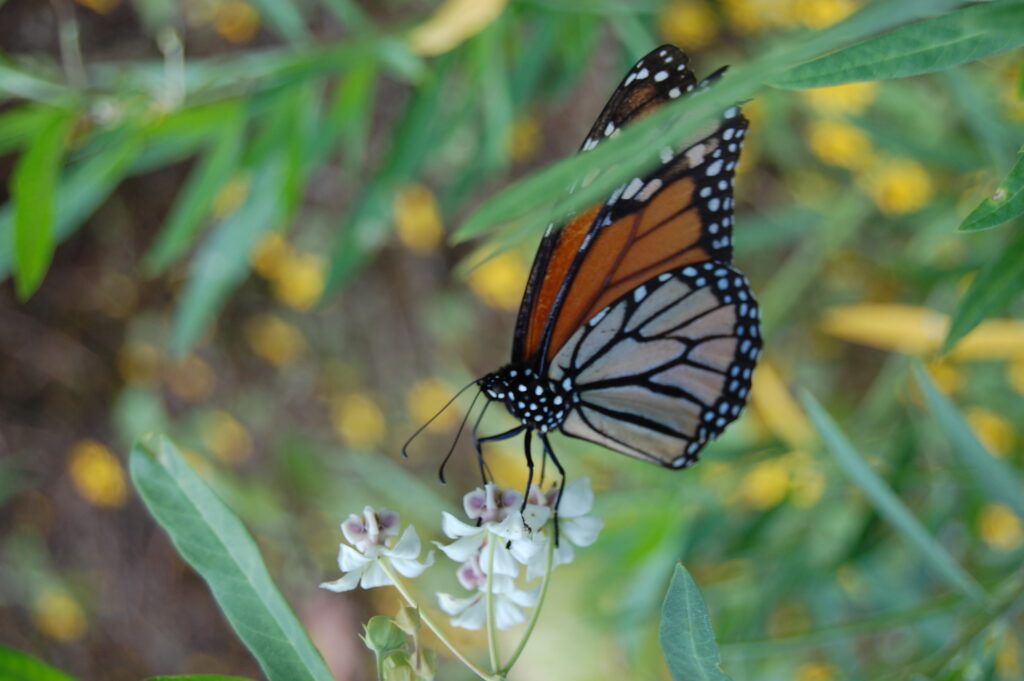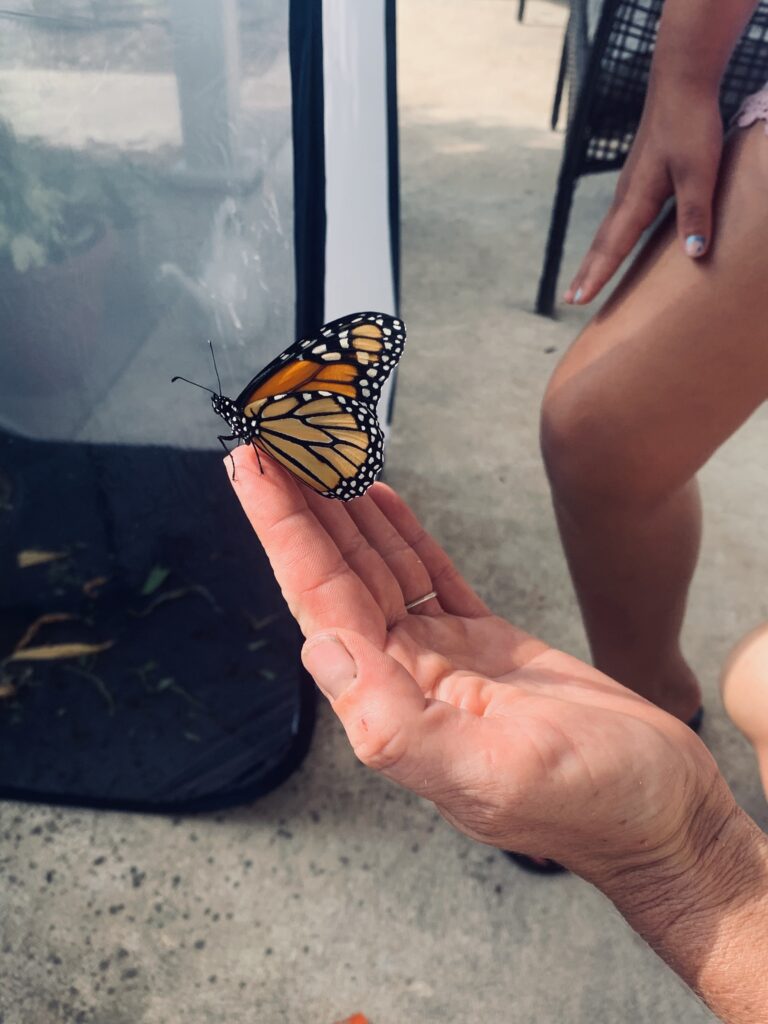Learn About Butterflies Day
Did you know today is Learn About Butterflies Day? We’re here to tell you the basics about these flittery-fluttery insects, why they’re important, what we’re doing to help the pollinators and actions you can take at home to help!

What is a butterfly?
To describe these complex and unique creatures as easily as possible: they go through what is called “metamorphosis”, where they start off as an egg, then grow into a caterpillar (also known as larva), then into pupa – where they encase themselves in a chrysalis, and then emerge drastically different than before, as a butterfly – complete with wings that give them the ability to fly!

It is estimated that there are more than 20,000 species of butterflies and moths in the world, with an estimated 750 species found in North America from Canada to Mexico. Currently, there are more than 30 species listed on the U.S. Fish and Wildlife Service’s list of endangered or threatened species.
Once of the most notable butterflies found in the U.S. is the monarch. Monarch butterflies are iconic with their recognizable orange, black and white wings. This species has a widespread distribution across North America and a widely publicized migration. Monarchs on the east coast migrate by flying to their overwintering grounds in the Sierra Madre mountains of Mexico.
An individual butterfly may travel over 3,000 miles, making this one of the longest insect migrations in the world! In recent years, eastern overwintering populations have decreased by 80 percent while western populations have decreased as much as 99 percent, making it imperative we take action to prevent extinction.

WHY ARE BUTTERFLIES IMPORTANT?
These insects have more than just looks, they have a crucial job within the ecosystem. Butterflies, just like bees, aid in pollinating plants and play a vital role in helping to pollinate agricultural crops that are often used for human consumption. In addition, butterflies can be an indicator species, meaning their presence can tell us about the health of the environment in a specific area. Lastly, butterflies are important for the food chain as source of food for other animals such as birds.
HOW IS THE VIRGINIA ZOO HELPING?
The Virginia Zoo has joined 72 other organizations and institutions accredited by the Association for Zoos and Aquariums to sign onto a monarch conservation initiative with AZA called SAFE Monarchs (Saving Animals From Extinction). These institutions will be working together to take collective action to save monarchs. The plan is currently in a draft form and will be reviewed by AZA.

The Zoo’s horticulture team plants pollinator-friendly plants around Zoo grounds, but is currently preparing for several new pollinator gardens, one of which will be located along the main pathway between the Zoo’s Asia – Trail of the Tiger and Event Field. Some plants that may be found growing in the pollinator gardens include button bush, mountain mint and milkweed, a monarch caterpillar’s favorite food! With the help of local volunteers, the pollinator gardens are set to come to life on May 9 during our second annual Family Volunteer Day.
WHAT CAN I DO TO HELP?
Do some research and plant your own pollinator garden! Check out which hardiness zone you are in to determine which types of plants are able to grow in different climates. Avoid using pesticides and chemicals on plants to alleviate the risk of harming pollinators and other animals.

You can also support monarch-friendly legislation! S. 2918 is the “Monarch and Pollinator Highway Act”, which would require the Department of Transportation to develop best practices around pollinator-friendly roads and highways. It would also promote pollinator-friendly practices in roadside corridors, such as planting native plants, reducing mowing, and using integrated vegetation management to reduce pests as opposed to pesticides. Take action today by contacting your senators.